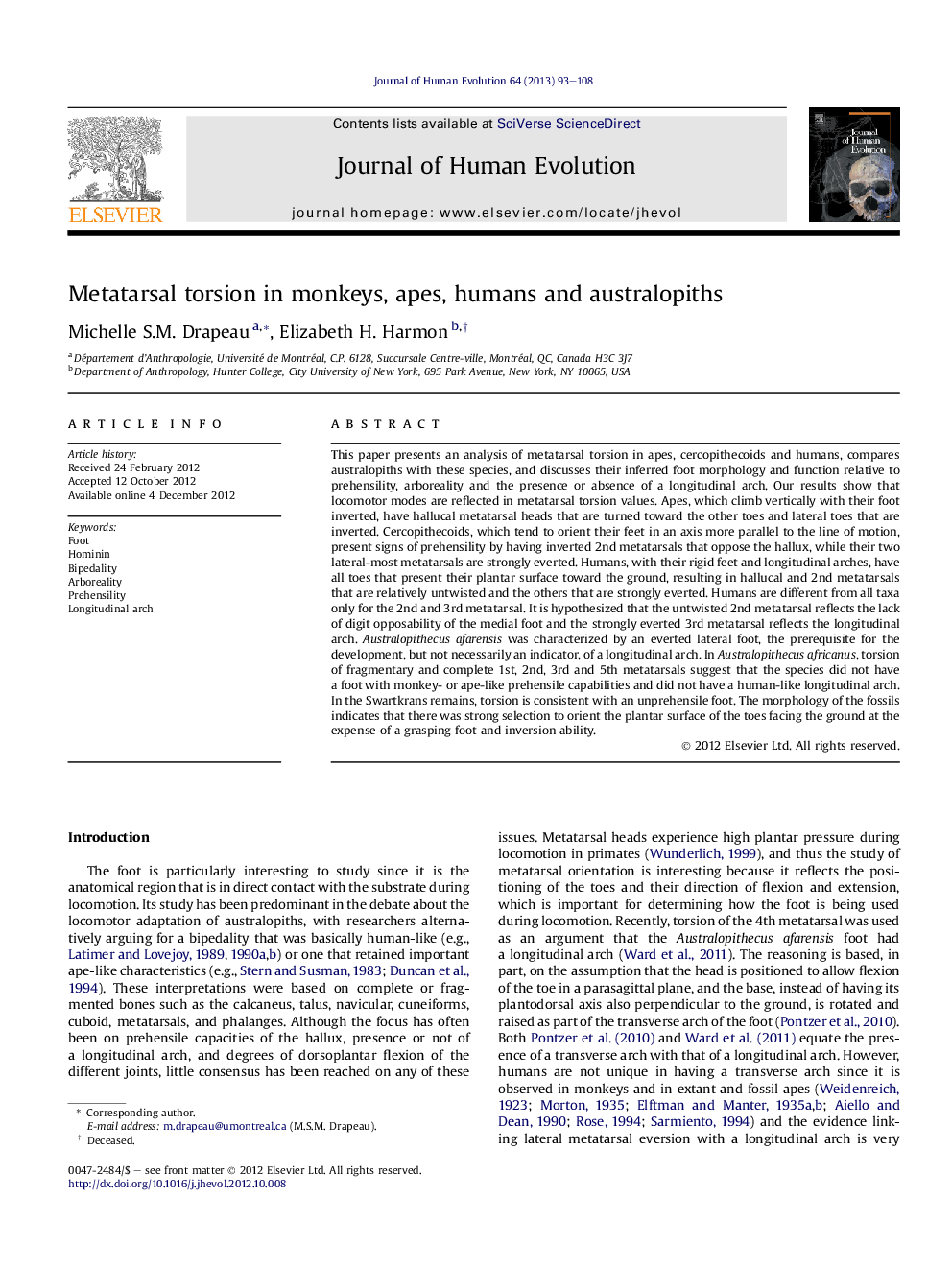| کد مقاله | کد نشریه | سال انتشار | مقاله انگلیسی | نسخه تمام متن |
|---|---|---|---|---|
| 4556304 | 1329469 | 2013 | 16 صفحه PDF | دانلود رایگان |

This paper presents an analysis of metatarsal torsion in apes, cercopithecoids and humans, compares australopiths with these species, and discusses their inferred foot morphology and function relative to prehensility, arboreality and the presence or absence of a longitudinal arch. Our results show that locomotor modes are reflected in metatarsal torsion values. Apes, which climb vertically with their foot inverted, have hallucal metatarsal heads that are turned toward the other toes and lateral toes that are inverted. Cercopithecoids, which tend to orient their feet in an axis more parallel to the line of motion, present signs of prehensility by having inverted 2nd metatarsals that oppose the hallux, while their two lateral-most metatarsals are strongly everted. Humans, with their rigid feet and longitudinal arches, have all toes that present their plantar surface toward the ground, resulting in hallucal and 2nd metatarsals that are relatively untwisted and the others that are strongly everted. Humans are different from all taxa only for the 2nd and 3rd metatarsal. It is hypothesized that the untwisted 2nd metatarsal reflects the lack of digit opposability of the medial foot and the strongly everted 3rd metatarsal reflects the longitudinal arch. Australopithecus afarensis was characterized by an everted lateral foot, the prerequisite for the development, but not necessarily an indicator, of a longitudinal arch. In Australopithecus africanus, torsion of fragmentary and complete 1st, 2nd, 3rd and 5th metatarsals suggest that the species did not have a foot with monkey- or ape-like prehensile capabilities and did not have a human-like longitudinal arch. In the Swartkrans remains, torsion is consistent with an unprehensile foot. The morphology of the fossils indicates that there was strong selection to orient the plantar surface of the toes facing the ground at the expense of a grasping foot and inversion ability.
Journal: Journal of Human Evolution - Volume 64, Issue 1, January 2013, Pages 93–108